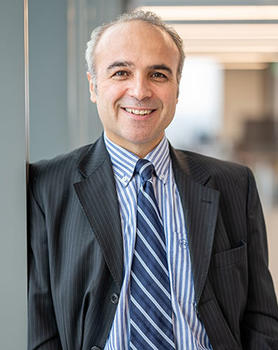Financially troubled U.S. hospitals are petitioning for more support from the federal government, but handouts won’t fix the underlying problem.
As the United States takes steps to move past the pandemic, its health care system is in a fragile financial state. At the end of 2022, about half of U.S. hospitals were in the red—making it the worst year for the industry since the start of the pandemic. No wonder, then, that hospitals are petitioning Congress for help and protesting the pending cessation of COVID funding from the federal government.
At first glance, the industry’s pleas appear justified. After all, COVID hit hospitals like a tidal wave, filling beds with patients requiring arduous, expensive care. At the same time, hospitals suffered from the same supply chain and workforce issues as virtually every other public-facing facility. And since the vaccine rollout, COVID’s waning lethality has produced an influx of patients who had delayed seeking treatment during the height of the pandemic—and whose health problems may have worsened in the interim.

However, Sebahattin Demirkan, an associate professor of accounting at George Mason University, says that the true source of the industry’s financial woes may lie beyond COVID. For Health Affairs Forefront, Demirkan and co-authors Ge Bai of Johns Hopkins University and Christopher M. Whaley of RAND Corporation took a deep dive into the most recent financial reports issued by ten of the U.S.’s largest nonprofit health care systems.
Contrary to the COVID-caused-it narrative, they found that, on average, revenue from patient care actually increased (albeit by less than 1 percent) between 2021 and 2022. Investment revenue, on the other hand, declined by a disastrous 185 percent over the same period. These are heavy but not totally surprising losses, seeing as how 2022 was the worst year for financial markets since the Great Recession. However, they cast doubt on the contention that hospitals’ financial struggles are primarily due to operational challenges brought on by the pandemic.
For Demirkan, getting the origin story right is critical for policymakers weighing the current situation. As the article states, “Without understanding the primary driver of hospitals’ financial strain, policymakers cannot make evidence-based decisions that benefit hospitals and patients in the long run.” Clearly, if the health care system’s exposure to downside risk is to blame, more federal funding alone wouldn’t resolve the issue. Even if federal bailout money were restored to 2020 levels, hospitals would be in danger of yet further losses via their investment portfolio.
Demarkan’s main concern is for the taxpayers who may be stuck with the bill, through increased taxes and/or rising patient fees and insurance premiums. “While hospitals are critical for patients and communities, resources used to pay for hospital care come from those same patients and communities,” the article states.
He points to a possible contradiction between the non-profit status of these institutions and their investment strategy, which he says resembles that of a hedge fund. Such an approach is likely to reap outsized gains in bull markets—in bear markets (as in 2022), above-average losses. “If they behave like any other for-profit company or financial company, then it is not going to serve the entire nation, the taxpayers or people. All stakeholders will be hurt, basically,” Demirkan says.
As one possible remedy, he suggests regulators could insist that non-profit hospitals limit risk exposure across their portfolio as a precondition for public assistance. “They may say, ‘if you want to invest extra cash, invest in ETFs or mutual funds. FedEx, Amazon etc.—less volatile and less risky financial instruments and stocks.” Still, Demirkan acknowledges that attempts to ratchet up oversight or accountability would run afoul of the influential health care lobby.
At the very least, therefore, he advises the government not to “with blind eyes, give away money to these hospitals, and just look at how they use that money if they are nonprofit hospitals. And basically, use your judgment accordingly.”
- March 28, 2024
- March 11, 2024
- February 22, 2024
- January 22, 2024
- January 8, 2024
